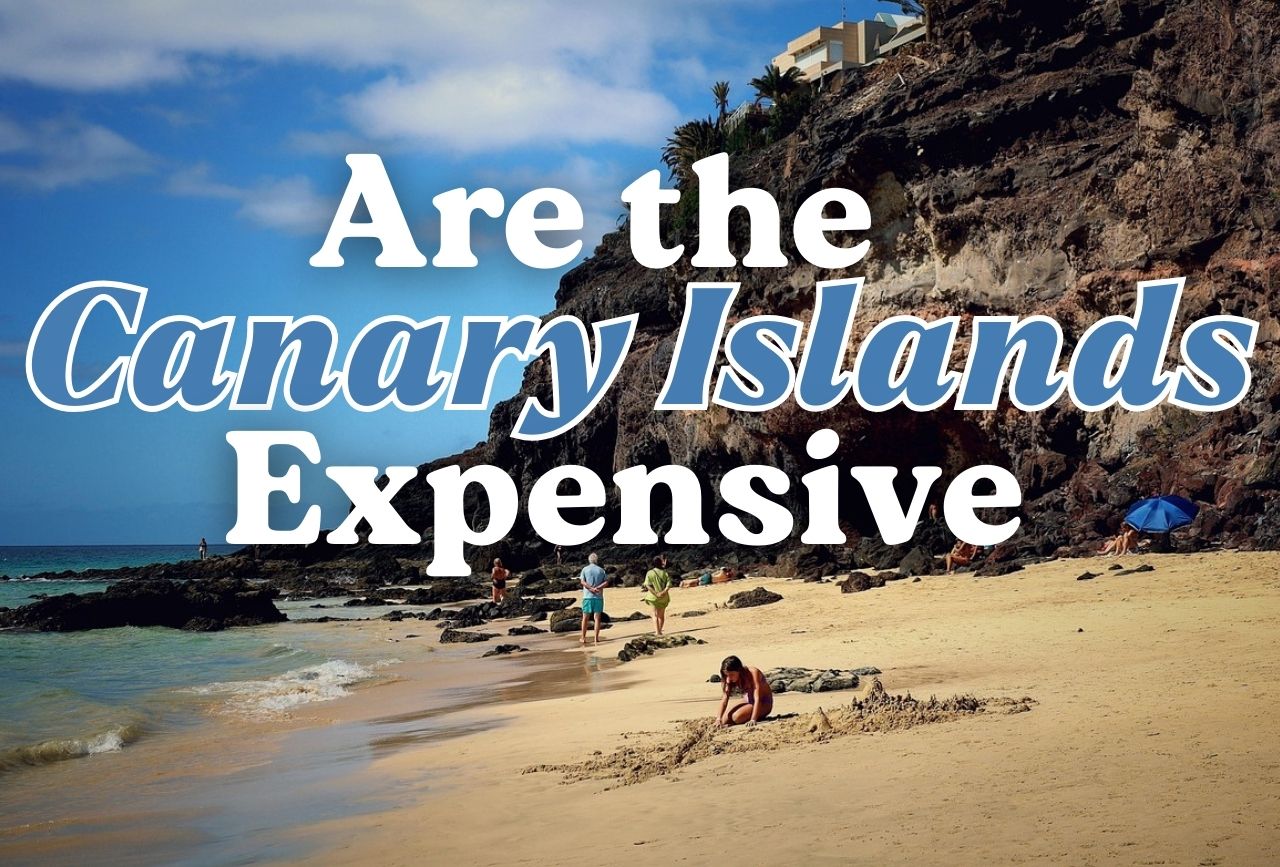The Canary Islands, an archipelago off Africa but part of Spain, blend tropical charm with European infrastructure and European standards, making them a good-value destination for budget-conscious travelers on a shoestring or those seeking luxurious places.
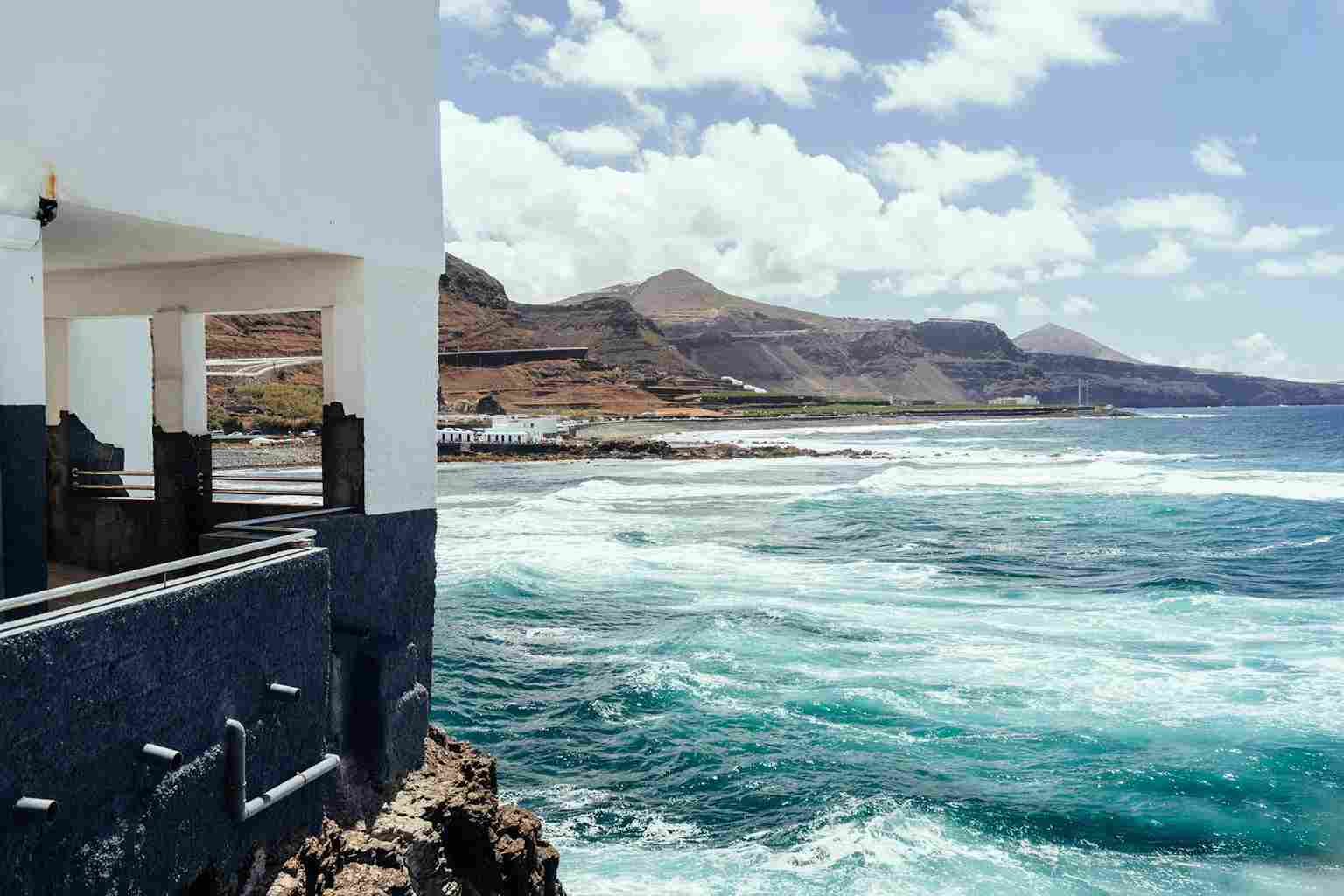
For visitors planning trip during peak tourism months or the double beach-holiday season, costs skyrocketing in tourism hubs means checking budgets carefully—daily expenses range from €60-75 on a budget to €120-185 mid-range per person, with affordable options like sensibly priced accommodation, dining options at Canarian restaurants, and public transport that’s easy and cheap.
Explore key attractions such as monuments, architecture-rich towns, moon-like landscapes, salt-water pools, free hiking, and local events like Carnaval at low rates, or opt for tours, food, and accommodations fitting any budget price range and preferences, including budget-friendly choices in smaller islands like offbeat islands such as El Hierro with its rural vibe and lighter expenses.

Beyond tourism, the Canary Islands are among the best places to live for expats, retirees, and remote workers drawn to year-round sunshine, a relaxed lifestyle, and lower cost of living—monthly budgets for a single person hover around €1,414-1,523 excluding rent, with affordable housing still possible despite rising prices.
The growing expat community welcomes newcomers looking to retire, work remotely, or invest in property, offering opportunity amid excellent healthcare, low tax rates, and activities. Residency via visa requirements like the Non-Lucrative Visa, Golden Visa, or Digital Nomad Visa is a smooth, hassle-free process with expert immigration lawyers, creating an inviting destination where choices abound for affordable, budget-friendly lifestyles.

Are the Canary Islands Expensive?
The Canary Islands can be surprisingly affordable, with lower living costs than mainland Spain. Expect budget-friendly transport, accommodation, and dining, plus special tax benefits for residents. From cheap flights to diverse activities, you can enjoy a subtropical paradise year-round without overspending.
Daily costs
Staying in the Canary Islands on a budget is easy with affordable choices. A surf hostel dorm costs €20 (US$22), a hotel room for two is €90 (US$99), or a one-bedroom, self-catering apartment runs €50 (US$55). Grab a coffee for €1.50-2 (US$1.65-2), a ración of cheese with mojos for €5 (US$5.50), or a glass of wine for €3-6 (US$3.20-6.60). My go-to? A free walking tour from the tourist office to explore without spending more.
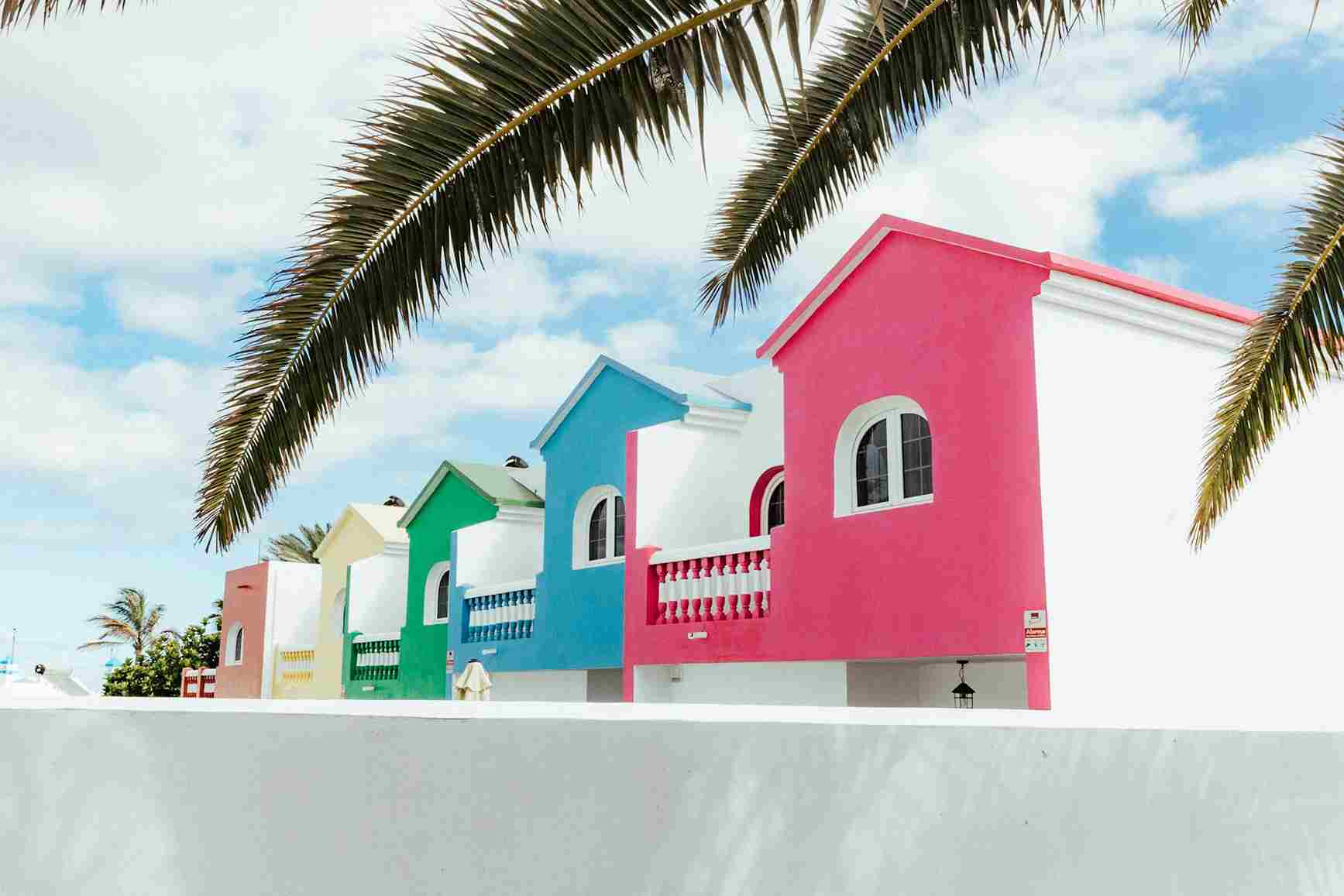
Currency in the Canary Islands
The Canary Islands use the Euro as their currency, perfect for budget travelers. Credit cards work at hotels, restaurants, and shops, but local markets and small businesses often take cash. ATMs, like those from CaixaBank and Euronet, are all over the islands, though a card fee or ATM fee might add €1-2. I stick to CaixaBank ATMs for fair rates, keeping costs low.
General Prices in the Canary Islands
Cost of Flights
The cost of flights to the Canary Islands fits all budgets, depending on your departure location. From Europe, budget airlines like Ryanair offer roundtrip flights to Tenerife, Gran Canaria, Lanzarote, or Fuerteventura for €40 to €150, though summer direct flights can reach €200 to €250. I’ve flown from New York for €180. Inter-island flights to La Gomera, La Palma, or El Hierro start at €50 to €55, while a ferry is just €50 per person. Mainland Europe to any island has affordable flight options at €50 to €125, keeping prices low.
Cost of Transport
Renting a car in the Canary Islands enables you to explore the islands with flexibility, costing around €150 for a week-long rental through DiscoverCars, based on my own trip. Bus and taxi options are super convenient, with fares from €1-5, while a ferry for island-hopping is affordable at under €50 but needs some patience for schedules. These cost estimates make exploring easy and budget-friendly!
Cost of Accommodation
The Canary Islands have a wide range of accommodation to suit any budget, ensuring an enjoyable stay for travelers.
Hostels are great for budget travelers, with shared dorms at €20 per night and private rooms around €50.
Moderate Hotels cost €100 to €200, offering comfortable amenities. Luxury Accommodations like hotels and resorts provide high-end experiences for those who splurge, but prices vary by location and level—expect to pay significantly for top-tier stays.
Cost of Activities

Having explored the Canary Islands as a traveler, I found a variety of activities to enjoy on any budget. Free beaches and hiking trails like those near Mount Teide are popular spots for low-cost day trips, costing around €30.
Water sports or cultural visits range from €20 to €100, while high-end experiences like private excursions or specialized activities can hit €300. The islands’ diverse attractions and guided tours ensure every experience fits your cost preferences.
Cost of Restaurants
Having savored meals in the Canary Islands, I found eating options to enjoy a variety of food on any budget. Local cafes and casual restaurants in town centers offer local Canarian restaurants’ dishes, like stews, for €10-€15 per person, ideal to eat affordably away from tourism areas.
Mid-range restaurants serve local and international dishes for €20-€40, while fine dining establishments cost €50-€100.
For quick, easy breakfasts or lunches, I shopped at Mercadona or Lidl, where supermarkets keep costs low. The islands’ restaurants stick to diverse price ranges, ensuring tasty experiences for all.
Tips for Traveling on a Budget
I found tips to keep costs low. Travel Off-Peak in spring or fall shoulder seasons for cheaper flights and accommodations. I saved money with budget-friendly hostels or apartment hotels to stay in.
Eat Local at local cafes or tapas bars for delicious, affordable meals. Supermarkets like a grocery store cut costs for breakfasts and lunches over days.
Enjoy free activities like hiking, visiting beaches, or exploring villages. Book in Advance to secure the best deals on flights, accommodations, and tours.
Why Move to the Canary Islands?
I see why expats, retirees, and remote workers choose to live here. The warm climate and subtropical weather offer year-round sun, while the lower cost of living compared to Spain keeps life affordable.
With European infrastructure like good roads and healthcare, plus a thriving expat community, the Canary Islands near Africa provide an excellent quality of life with vibrant culture and cozy homes.
A Perfect Subtropical Climate All Year Round
I’ve loved the year-round warm weather, like an eternal spring with average temperatures of 18°C-24°C (64°F-75°F).
The stable weather and mild weather of Spain’s islands mean no extreme temperatures, freezing winters, or unbearable heatwaves. This creates ideal conditions for an active lifestyle, from hiking in volcanic scenery to swimming, surfing, or cycling by pristine beaches and lush forests. The clean air and stunning landscapes make outdoor activities like water sports or relaxing on the beach perfect for a healthy lifestyle full of natural beauty.
Lower Cost of Living Compared to Mainland Spain
I’ve enjoyed an affordable cost of living compared to mainland Spain and European countries. Housing, whether renting a beachfront apartment or buying a quiet villa in the countryside, is cheaper than in Madrid or Barcelona, with affordable options for property.
Daily expenses like groceries, dining out, and entertainment stay low due to the special tax system with IGIC, a lower VAT than in Spain.
Utilities and transport, including efficient, inexpensive public transport, keep utility bills and everyday expenses lower than in Spanish cities or major European cities. Lower taxes ensure great value for your money, letting you live comfortably on a lower budget for housing, food, and transportation.
Special Tax Benefits for Residents & Businesses
Having explored the Canary Islands’ unique tax advantages, I found it’s a gem for expats, entrepreneurs, and investors.
The Zona Especial Canaria (ZEC) special tax zone offers lower corporate taxes and financial incentives for businesses starting a business or setting up companies. The IGIC, a lower VAT at 7% versus 21% VAT in mainland Spain, makes buying property affordable.
Favorable tax regimes and tax reductions create an investment-friendly environment across industries, attracting Europe’s freelancers and business owners.
A Thriving & Welcoming Expat Community
I found a diverse expat population and welcoming atmosphere perfect for newcomers. It’s easy to settle in Tenerife, Gran Canaria, and Lanzarote, where British expats, German expats, and Scandinavian expats build a strong support network for foreigners.
Key cities like Tenerife and Gran Canaria offer international schools, expat social groups, and English-speaking services including doctors, schools, and businesses, creating a friendly atmosphere and a vibrant international community for newcomers.
Excellent Connectivity with Spain & Europe
I love their excellent accessibility. Frequent direct flights to Madrid, Barcelona, and major European cities in Europe, plus budget airlines with cheap flights, keep affordable travel costs to Spain and Africa. Inter-island transport via ferries and short domestic flights lets you explore the archipelago easily. This connectivity supports business connections across Europe while maintaining a peaceful lifestyle in the Canary Islands, making travel frequently a breeze.
Cost of Living in the Canary Islands
I’ve found its affordable cost of living makes it an attractive destination compared to major Spanish cities and European countries. Housing is budget-friendly, whether renting or buying, and groceries are surprisingly cheap, letting you stretch your money. Transportation, like buses, is reliable and low-cost, while entertainment—think local festivals or beach days—offers great value. For expats, retirees, and digital nomads, the Canary Islands provide a cozy, wallet
How Much Does It Cost to Live in the Canary Islands?
Living in the Canary Islands, like Tenerife or Gran Canaria, offers lower daily expenses than Madrid or Barcelona.
- Rent for a 1-bedroom apartment in the city center is €700-€900, versus €1,200-€1,800 (Madrid) or €1,300-€2,000 (Barcelona). Outside the city center, it’s €500-€750, compared to €900-€1,400 and €1,000-€1,500.
- Monthly groceries for one cost €200-€300 here, less than €300-€450 (Madrid) or €350-€500 (Barcelona).
- A mid-range restaurant meal is €10-€15, versus €15-€25 and €20-€30.
- Public transport monthly passes are €40-€50, cheaper than €55-€75 (Madrid) or €60-€80 (Barcelona).
- Gasoline (per liter) at €1.30 beats €1.60 and €1.65.
- A gym membership costs €30-€45, versus €40-€60 and €45-€70.
- Cappuccino (regular café price) is €1.50-€2.00, compared to €2.50-€3.50 and €2.70-€3.80.
Reflecting my travels, prices vary by island, neighborhood, but the average cost of living is lower, shaped by personal lifestyle, making the Canary Islands a budget-friendly choice.
Why is the Cost of Living in the Canary Islands Lower?
Lower Rent Prices
The Canary Islands, especially popular expat areas like Las Palmas on Gran Canaria and Santa Cruz on Tenerife, boast rental prices that are 30-50% cheaper than Madrid and Barcelona, offering affordable living.
Reduced Tax Rates (IGIC vs. VAT)
The Canary Islands offer a special tax system with reduced tax rates, using IGIC (Impuesto General Indirecto Canario) at 7% instead of mainland Spain’s 21% VAT, benefiting residents. I’ve enjoyed cheaper groceries, consumer goods, and services thanks to this lower VAT.
Affordable Transportation
The Canary Islands feature public transportation that’s efficient and inexpensive, with inter-island ferries and flights for travel between islands. I’ve noted lower fuel prices than mainland Spain, keeping costs down.
Low Utility Costs
The Canary Islands’ mild climate keeps energy costs lower, reducing heating needs in winter. I’ve found bills stay light, boosting affordability.
Taxes & Financial Benefits for Expats
Residents gain financial advantages and tax advantages over European regions. I’ve found lower personal income tax rates and special tax benefits for businesses via Zona Especial Canaria (ZEC) with corporate tax rates at 4%, appealing to foreign investors and property buyers. The lower VAT with IGIC at 7% trumps mainland Spain’s 21% VAT, and no wealth tax makes it attractive.
How to Move to the Canary Islands
Non-EU citizens can retire, work remotely, invest, or study with proper legal planning and an appropriate residency permit or visa to stay in Spain. As an expat, my smooth relocation process relied on expert immigration lawyers for visa applications, helping individuals and families settle in the Canary Islands.
Types of Visas Available for Expats in the Canary Islands
The Non-Lucrative Visa fits retirees and financially independent individuals who don’t work in Spain, needing proof of financial stability and private health insurance—a path I considered.
The Golden Visa aids real estate investors with a €500,000 property investment for a fast-track residency permit, while the Digital Nomad Visa suits remote workers and freelancers from companies outside Spain, offering tax benefits in Spain.
The Student Visa lets you study at a university, language school, or educational institution in the Canary Islands.
Best Places to Live in the Canary Islands
Tenerife
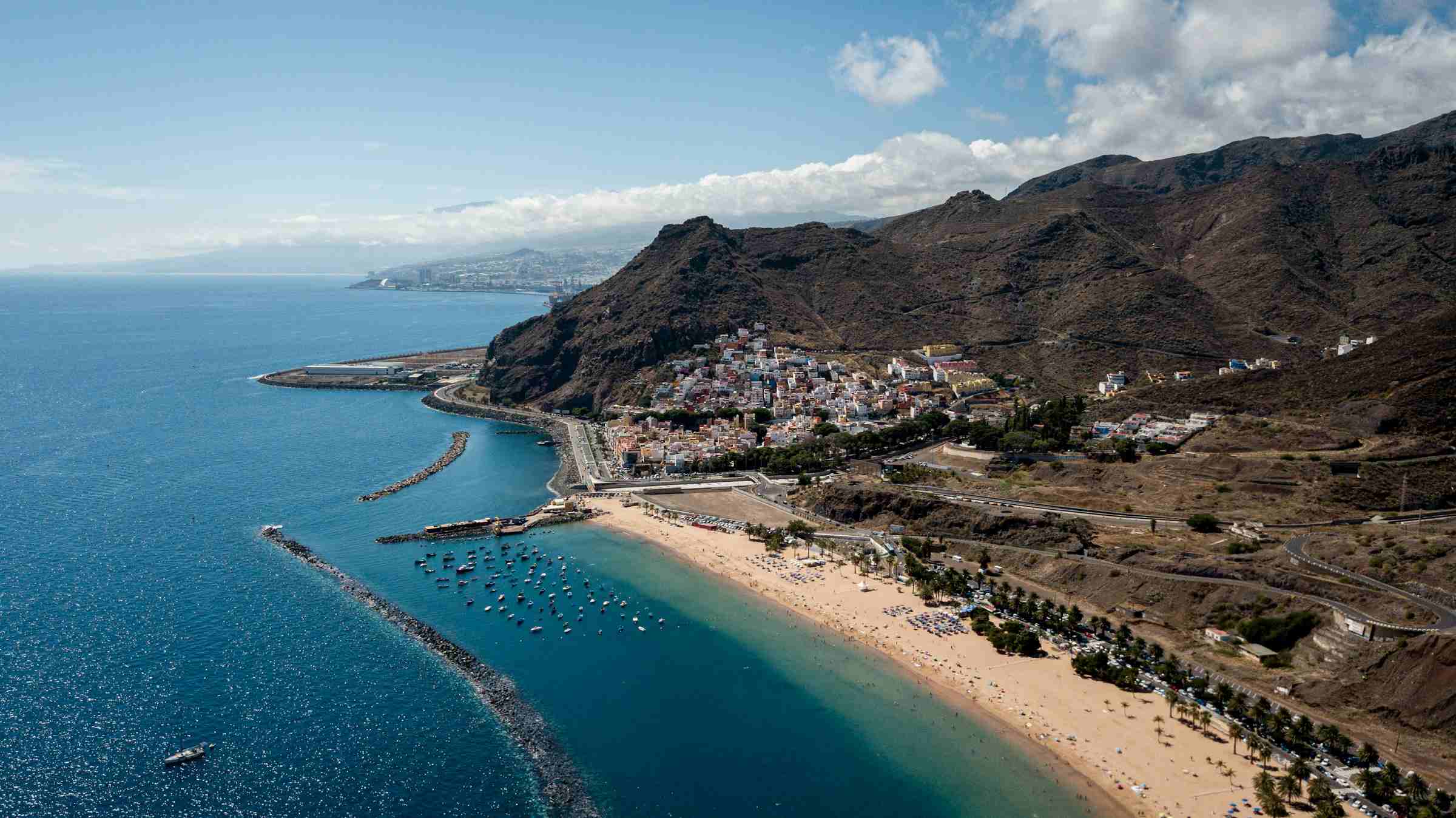
Tenerife, a lovely island, attracts expat families and digital nomad folks with solid infrastructure, featuring international schools and hospitals. I enjoyed job opportunities and a vibrant digital nomad community with coworking spaces and fast internet, keeping costs low and life exciting.
Gran Canaria
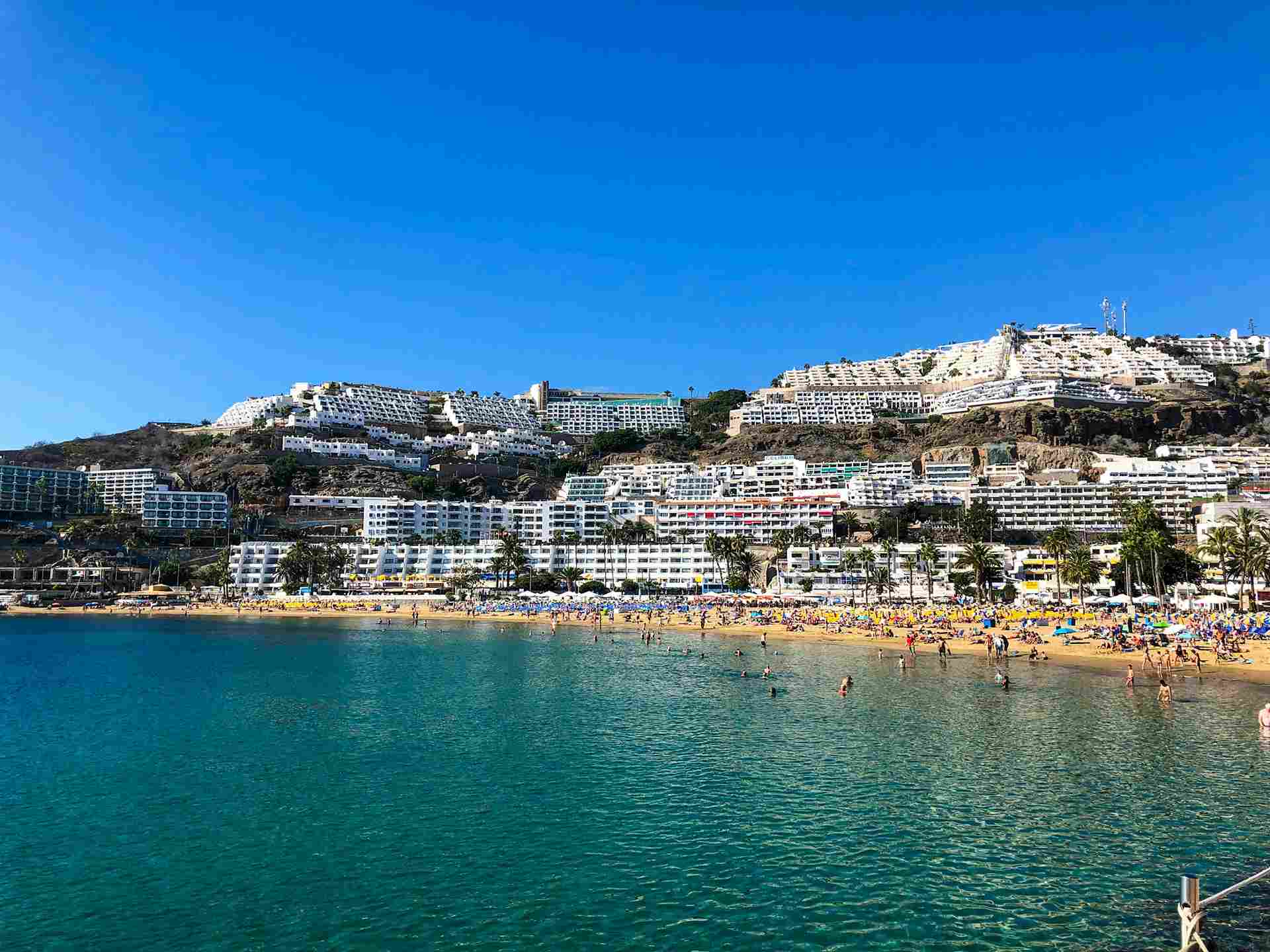
Gran Canaria, especially Las Palmas, thrives with vibrant expat communities in Spain, boasting a strong real estate market with beachfront apartments and calm countryside villas. From my time there, I’ve noticed the economy boosts with business opportunities in tourism and trade, plus solid remote work options, keeping costs affordable for professionals and investors.
Lanzarote
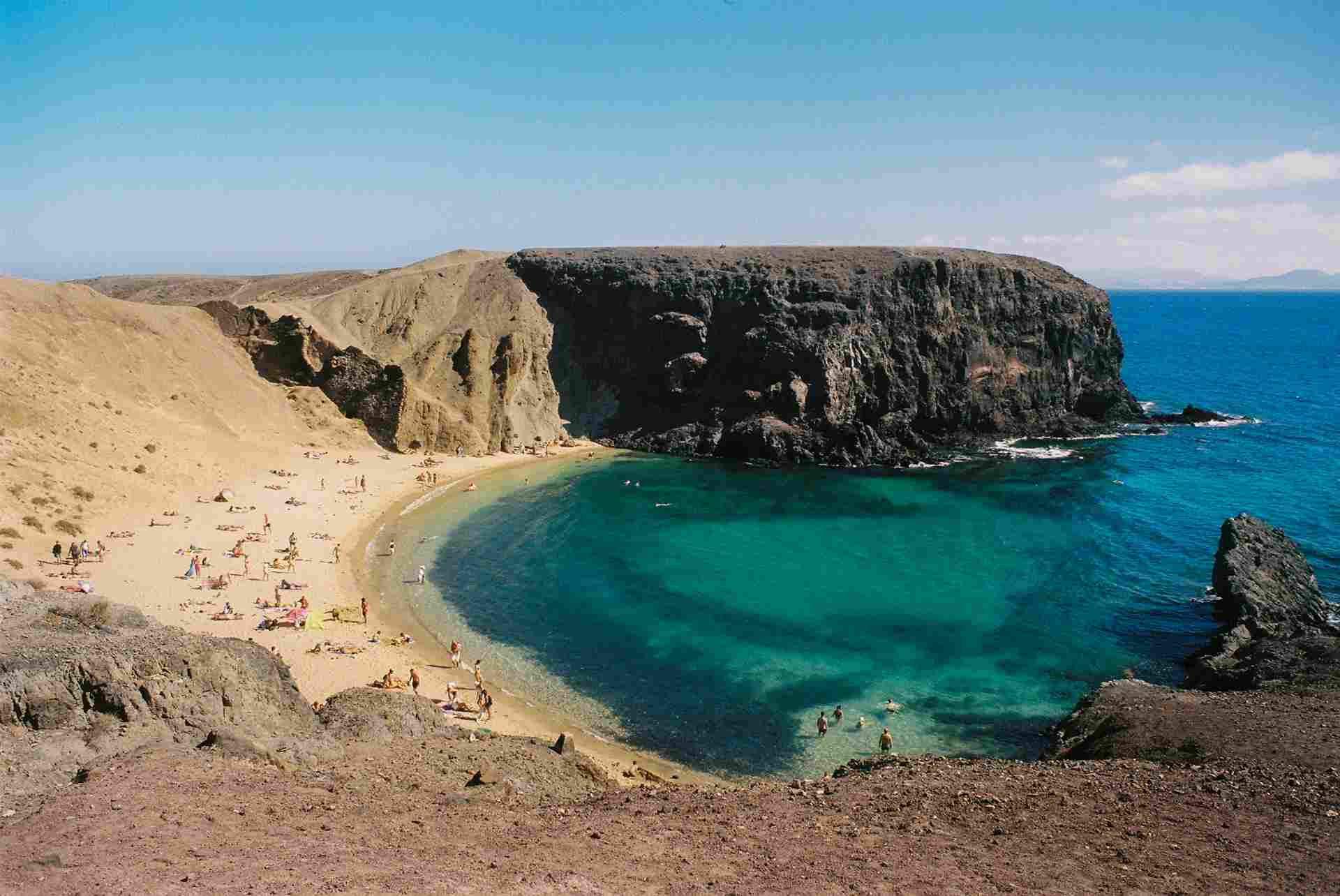
Lanzarote provides a calm lifestyle with a small population, making the cost of living lower than bustling Tenerife or Gran Canaria. I’ve enjoyed its amazing landscapes and surroundings as a UNESCO Biosphere Reserve, ideal for retirees and nature lovers seeking affordability.
Fuerteventura

Fuerteventura’s beaches draw surfers to prime spots like Corralejo, where I’ve ridden epic waves. This island’s chill city vibe suits expats and remote workers, with a welcoming community. Life here is affordable—rental prices start at €28/night, making it a budget-friendly paradise.
Working in the Canary Islands
Job Market for Expats
The Canary Islands have a lively job market for expats. I’ve seen remote workers and entrepreneurs thrive in the tourism and hospitality sector, with jobs in hotels, restaurants, and travel agencies. The economic growth fuels technology opportunities for tech professionals and digital nomads. The real estate market also booms, with foreign investors eyeing property for investment. These jobs make the Islands affordable for expats.
Tax Benefits for Entrepreneurs & Freelancers
The Canary Islands offer entrepreneurs like me a sweet deal with the Zona Especial Canaria (ZEC), cutting corporate tax to just 4% for businesses. The IGIC, a low 7% VAT, keeps business costs down. These tax incentives draw startups and international investors, making the Canary a budget-friendly spot to grow your business.
Healthcare & Education in the Canary Islands
Healthcare System
The Canary Islands offer affordable healthcare with public and private options. I’ve used the Spanish SNS, which gives free medical care to EU citizens and residents.
Non-EU folks on a Non-Lucrative Visa, Digital Nomad Visa, or Golden Visa need private health insurance for legal requirements, but premium services from insurance providers are cheap and reduce waiting times, keeping healthcare costs low in the Islands.
Education for Expats
The Canary Islands provide affordable educational options for expat families. I’ve seen International Schools with British, American, and IB programs offer great education, though with fees.
Public Schools are free for residents, using the Spanish curriculum. Higher Education at University of La Laguna and University of Las Palmas is budget-friendly, with Student Visas and residency applications easing school enrollments in the Islands.
Sample: Week Budget to Visit the Canary Islands
Budget-Friendly Cost Estimate (2 people, 8 Nights)

The Canary Islands prove you can enjoy a wallet-friendly 8 nights adventure, and I’ve crunched the numbers from my own travels. Kicking off in Tenerife, renting a car via La Tortuga Hostel for €148 lets you explore South Tenerife’s sunny spots, while a stay at Adrián Hoteles Roca Nivaria costs €190 for a private room, keeping the budget tight. Simple breakfast from a grocery store adds just €14, showing how the cost estimate stays low.
For lunch, mixing grocery buys with a restaurant meal in South Tenerife totals €40, a steal compared to pricier mainland spots. Dinner with three casual restaurant outings costs €110, blending local flavors I’ve savored myself.
An activity like the No Chase Whale & Dolphin Boat Tour for €52 adds fun without breaking the bank, proving people can enjoy 2 without overspending.
A ferry trip to La Gomera for €115 opens up more budget-friendly exploring, with hotel nights at Apartamentos Los Telares for €137. Breakfast and lunch there cost €15 and €20, while dinner at €70 keeps it affordable.
Activities like a walking tour (€20) and whale watching (€100) round out the trip, showing the Canary Islands offer a cost estimate of €1,498 for 2 people, far cheaper than many European getaways.
Moderate Cost Estimate (2 people, 8 Nights)
The Canary Islands let you enjoy a moderate 8 nights trip without stretching your wallet too far, and I’ve explored this firsthand. Starting in South Tenerife, renting a car for €148 through DiscoverCars opens up the island, while a stay at Bahia del Duque costs €755 for four nights, offering a comfy upgrade from basic spots. Breakfast is included, saving you €0 extra, which keeps the cost estimate sensible.
For lunch, mixing one grocery store meal with two restaurant outings in South Tenerife totals €55, a balance I’ve enjoyed on past trips. Dinner steps up with two casual restaurant meals and one nicer one at €200, letting you taste local flavors without breaking the bank. An activity like the Guided Anaga Rural Park Hike with Food Tasting for €110 adds a cultural twist, proving a moderate budget can include special moments.
A ferry ride to La Gomera costs €115, with a hotel stay at Hotel Escuela Rural Casa Los Herrera for €200 over two nights. Breakfast is included again at €0, while lunch with two restaurant meals hits €40, and dinner with one casual and one nicer meal reaches €140.
Activities like a walking tour (€20) and ethnographic park visit (€30) plus whale watching (€100) and a private hike (€135) in La Gomera enrich the trip.
Back in North Tenerife, a hotel stay at La Laguna Gran Hotel for €303 over two nights keeps things cozy. Breakfast is included at €0, lunch with two restaurant meals costs €50, and dinner with one casual and one nicer meal is €175.
Activities like a self-guided Teide National Park tour with a cable car (€46) and a quad trip (€165) plus stargazing (€72) and another Guided Anaga Rural Park Hike with Food Tasting (€110) round out the adventure.
A whale and dolphin watching catamaran with transfer (€122) and a Barranco del Infierno Gorge hike (€22) in South Tenerife add variety, while Siam Park (€91) brings thrills. The total cost estimate for 2 people over 8 nights lands at €3,094, showing the Canary Islands offer a moderate budget option that feels rich in experience compared to pricier mainland destinations.
Luxury Cost Estimate (2 people, 8 Nights)
The Canary Islands offer a luxury escape, as I’ve experienced in Tenerife and La Gomera. Here’s a concise cost estimate for 2 people over 8 nights, covering hotel, activity, dining, preferences, and budget.

Hotel costs are steep: €1,513 for 4 nights at Bahía del Duque (South Tenerife), €350 for 2 nights at Parador de La Gomera (La Gomera), and €663 for 2 nights at Los Jardines de Abama Suites (North Tenerife). I loved the comfort, though it hits the budget hard.
Activity expenses vary by preferences: South Tenerife includes €144 for Los Gigantes Whale Watching, €175 for a Masca excursion, €22 for Barranco del Infierno Gorge Hike, and €312 for Siam Park All-Inclusive Package. La Gomera offers €100 for Dolphin Watching and €135 for a Garajonay hike. North Tenerife has €165 for a Teide Quad Trip, €72 for stargazing, and €110 for an Anaga hike. These were trip highlights for me.
Dining costs depend on taste: Breakfast was free with hotel stays (€0), but lunch was €75 (South Tenerife), €40 (La Gomera), €50 (North Tenerife) for 2-3 meals. Dinner was €300 (South Tenerife), €140 (La Gomera), €200 (North Tenerife) for mixed dining. The food was a treat, yet pricey.
Transfer via ferry between Tenerife and La Gomera costs €115 (car included). A rental car in South Tenerife was €148 via DiscoverCars, a practical choice I enjoyed.
Total cost estimate: €5,054. The Canary Islands can be expensive for luxury, but adjusting preferences balances the budget.
Pros & Cons of Living in the Canary Islands
The Canary Islands offer affordable island life in Tenerife and Gran Canaria, where I’ve enjoyed the sunny weather and outdoor lifestyle.
Expats, retirees, and remote workers benefit from tax incentives and financial benefits, keeping cost of living lower than mainland Spain, with a strong expat community and residency options.
Job opportunities in non-tourism sectors add comfort, but costs of imported goods rise due to the isolated setting, while lifestyle and climate bring adventure despite some higher cost of living for residents.
Conclusion
Having spent a month-long stay in the Canary Islands, I can tell you this destination is a delight for travelers watching their budget. I settled into cozy guesthouses that offered affordable accommodations with a warm, welcoming vibe.
For a treat, I enjoyed tasty meals at local spots, where budget-friendly food kept my bank happy. On special days, I went for upscale dining or stayed at top hotels for luxury experiences that felt like a steal.
Unlike the pricey tours of Antelope Canyon vs Grand Canyon, the Canary Islands blend charm and value, making every moment feel like a curated adventure without breaking the wallet.
Faq
Is Canary Island expensive to visit?
The Canary Islands can fit different budgets, based on my trips there. For a 3-night trip with 2 travelers, the latest prices show a Top vacation at $549, a Family vacation at $509, a Romantic vacation at $658, a Luxury vacation at $592, and a Budget vacation at $360. I found it depends on what you pick, but even the luxury option felt reasonable with some planning.
How much is a meal in the Canary Islands?
Food and drink prices change by area, but from my time eating out, main dishes in a normal restaurant cost about 8-17 €. Desserts are around 5-6 €, and a dinner for two at a restaurant ranges from 25-40 €. I enjoyed tasty meals without spending too much, especially with local spots.
Which is the cheapest Canary Island to visit?
Among the Canary Islands, Gran Canaria, Tenerife, and Fuerteventura stand out. I found Gran Canaria nested as the most affordable to visit, with a vibrant and diverse feel. It’s a popular island where I saved money while exploring its charm.
What is the cheapest month to go to the Canary Islands?
November is the cheapest month to fly to the Canary Islands. Meanwhile, July and August are the expensive months due to crowds. I loved the quieter November trips for better deals.

